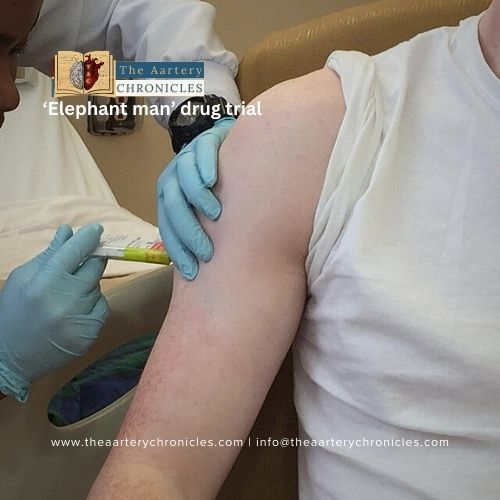

Steroid Cream Worsens Rash in Woman With Fungal Infection
Summary: A 32-year-old woman worsened her fungal skin infection by using over-the-counter steroid cream instead of seeking medical help. Doctors highlight the dangers of self-medication, especially during the monsoon season when fungal infections thrive. Early diagnosis, hygiene, and complete antifungal treatment are crucial to prevent complications.
Steroid Cream Worsens Fungal Infection in 32-Year-Old
In a case of skin infection, a 32-year-old woman suffering from it applied steroidal cream to her skin rashes and nail damage, which worsened her condition.
Ignored Symptoms and Self-Medication
Five months ago, a woman, aged 32 years, found multiple itchy lesions on her abdomen, thighs and face and discoloured nails. Instead of seeking medical attention, she tried out home remedies without any relief.
On the advice of a chemist, she applied steroidal cream to her rash, which provided relief from itching, but the rash intensified and became redder, making her skin thinner and scarred.
Finally, she sought medical assistance and visited the outpatient department (OPD) at the National Skin Hospital in Panchkula, where she was treated with the appropriate anti-fungal medication and her skin cleared out in 45 days.
Expert Insight: Why Steroids Worsen Fungal Infections
According to Dr. Vikas Sharma, Head of Dermatology at National Skin Hospital, Panchkula, the woman had a routine fungal infection that did not warrant the application of any steroidal medication.
He said that though steroidal creams may provide temporary relief from itchiness, the fungal infection worsens due to the immune system getting suppressed, which makes the infection severe and causes it to spread.
Why Fungal Infections Rise in Monsoon
Dr. Sharma explained the increase of fungal infections during the summer and monsoon seasons happens due to the thriving of fungi in warm and moist environments, and the combination of excessive sweating and humidity creates ideal conditions for fungal growth.
Common Fungal Infections in Monsoon Season
According to Dr. Vikas Bhutani, Director of Internal Medicine at Fortis Hospital, Mohali, Athlete’s foot is the most common fungal infection, which appears as a red and circular rash between the toes.
Other infections are jock itch, which occurs in the groin area and yeast infections that occur under the arms, breasts, or folds of the groin area. Fungus also affects the nails and causes them to become thick, brittle and discoloured.
More Than Just Skin: ENT Concerns Rise Too
However, there is more – A rise of fungal ear infections, nasal allergies, irritation of throat during the monsoon season has been seen by Dr. Raghav Mehan, Senior Consultant, ENT, Paras Health, Panchkula.
“A damp indoor environment and poor ventilation are key triggers. They worsen nasal blockages, throat discomfort, and fungal ear infections,” he said.
Signs You May Have a Fungal Infection
Indicators commonly observed in fungal infections:
- Discoloured or thickened nails
- Itchy red rashes
- Skin irritation or lesions that worsen with scratching
- White patches on the skin
- Recurrent cough or breathing issues – seen in rare cases
Ignoring these early symptoms may cause the infection to spread further to internal organs like the lungs in persons having low immunity.
Doctor-Recommended Hygiene Tips
Dr. Bhutani advised that maintaining skin hygiene is necessary to prevent fungal infections from occurring.
- Taking a bath at least twice a day, thoroughly drying feet, especially between the toes
- Immediately changing wet clothes and shoes after getting wet
- Wearing loose garments made of cotton instead of synthetic ones
- Using antifungal powder on the body parts that perspire a lot
- Using sunscreen, as the UV rays are more damaging during the monsoons.
Precautions to Prevent Spread
Doctors advise against sharing towels, bedsheets and clothes as this can spread infections among family members.
- Consuming probiotic-rich foods like yoghurt, fermented food, and kefir
- Avoiding highly/ultra-processed and sugary foods, helps in the prevention of fungal growth leading to fungal infections.
Lungs at Risk Too: Fungal Infections of the Lungs
Rise in humidity leads to risk of contracting fungal infections in the lungs as well. According to Dr. Sonal, Consultant, Pulmonary Medicine, Livasa Hospital, Mohali, in conversation with The Media, said more cases of pulmonary aspergillosis are seen during the monsoon season as compared to fungal pneumonia.
Symptoms include
- Cough
- Wheezing
- Fever
- Even blood in the sputum
“especially in those with weak immunity or lung disease.” It is essential to consult a doctor immediately if symptoms of blood in sputum or persistent breathing issues are noticed. “Early detection prevents complications.”
When to see a Doctor
Medical intervention should be sought at the earliest signs of fungal infection. In cases of self-medication or incomplete treatment, there is a possibility of an increase in the risk of developing resistance to antifungal drugs
Complete the Treatment, Avoid Resistance
A warning issued by Dr. Sharma is that with the incidence of rising resistance among fungal organisms, it is necessary and advised that the entire course of antifungal treatment be completed. Stopping it midway or using the wrong creams will only worsen the condition, he said.
Final Word: Hygiene, Early Care Are Key
The erratic humidity during the monsoon increases the speed at which fungal infections spread. Doctors advise maintaining good personal hygiene, timely medical intervention and avoiding self-medication at any costs, which are the best defences against the onset of fungal infections. Symptoms of itching, unusual rashes or breathing problems should not be ignored and should be checked by a doctor before the infection worsens and spreads.
Inputs from various media sources.
- Rupal Sonpal
- Health News and Updates
- 5 August 2025
- 07:00








